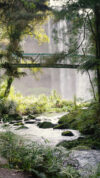All Downloads from the category: “SETAC”
Alscher, Hecht-Rost, Lückmann (2017) On the way to a new guideline: Results of three years of bumble bee semi-field testing
According to the EFSA Guidance Document on bees (EFSA, 2013), not only honey bees but also bumble bees should be considered in the risk assessment of plant protection products. Up to now, no official guideline for standardised semi-field trials is available to assess effects on bumble bees.
Nikisch, Lutz (2017) EasyGUTS Running R GUTS scripts in a Windows® based software
We developed a Windows® software to manipulate and run R GUTS scripts for the evaluation of surface water exposure profiles calculated with the environmental fate model FOCUS TOXSWA 4.4.3.
Blanckenhagen (2017) Enclosure set up: a well-known system as a new semi-field approach for risk assessment of plant protection products on common voles
Within the EFSA (2009) guided registration of pesticides, the risk assessment for small herbivorous mammals is an all-crop scenario, which often fails to reach the trigger indicating a safe use, even with the higher tier approach. For supporting ‘weight of evidence’ approaches, EFSA (2009) recommends field effect studies or population modelling.
Faupel et al. (2017) Functional endpoints in ecotoxicology: A case study in freshwater indoor microcosms
Little is known about the influence of toxicants on the function of freshwater sediments. To better understand these effects, a microcosm experiment was carried out with Cadmium (Cd) as a model pollutant (50 and 400 mg Cd kg-1 dry sediment).
Laucht et al. (2017) Habitat preferences of linnets (Linaria cannabina) in vineyards
A large part of vineyards in Europe show no or very little ground vegetation, due to chemical and non-chemical weed control. But management techniques have started to change in the last years resulting in a reduction in herbicide applications and in an increase in ground vegetation growth and cover.
Neuwoehner (2017) Chances and Challenges in Regulatory Ecotoxicological Mixture Toxicity Assessment for Plant Protection Products
Lückmann et al. (2017) Fenoxycarb, a suitable reference item in semi-field testing on the solitary bee Osmia bicornis (L., 1758) (Hymenoptera, Megachilidae)?
According to the ‘EFSA Guidance Document on the risk assessment of plant protection on bees’, not only honeybees but also bumble bees and solitary bees have to be considered for the first time. But for testing of solitary bees under laboratory, semi-field and field conditions no official test guideline exists.
Jakoby et al. (2017) Evaluating Ecological Recovery in Mechanistic Effect Models for Environmental Risk Assessment
In environmental risk assessments (ERA) for plant protection products (PPP) one possible protection goal option at the population level is recovery (EFSA, 2016). This recovery option accepts “some population-level effects of a potential stressor if recovery takes place within an accepted time period”.
Ludwigs et al. (2017) Skylarks nesting in pesticide-treated fields compared to those nesting in non-treated agricultural land and main reasons for complete nest loss
Pesticides are commonly considered a cause of species decline in farmland. In the past, most studies have focused on acute effects of pesticides on adult birds or on indirect effects on offspring (e.g. mortality due to limited food resources as a result of pesticide use).
Nikisch, Llandera, Lutz (2017) Step4ward – An Efate Toolbox
‘Step4ward’ is a user-friendly Windows® toolbox to automate PECsw calculations, extract data from the current models FOCUS TOXSWA and SWAN and create MS Word® tables in the current dRR format.
Lückmann, Becker (2015) Honeybee brood studies under field conditions: Is there a difference of the brood termination rate compared to semi-field studies?
Based on EU Regulation 1107/2009/EC the current regulatory risk assessment on bees has to address the risk to honeybee larvae or honeybee brood. According to the data requirements under EC 1107/2009 Commission Regulation 284/2013 and the proposed EFSA Bee Guidance Document (EFSA 2014), both the Oomen bee brood feeding test (OOMEN et al. 1992) as well as the OECD Guidance Document 75 (OECD 2007) (hereafter called OECD GD 75) are given as the two higher tier options to refine the risk on honeybee brood if concerns are raised in tier 1.
Ludwigs et al. (2015) A statistical approach for selecting the most appropriate PT value for long-term wildlife risk assessments
In higher tier Risk Assessments (RAs) for Birds and Mammals, exposure takes into account the ‘portion of food taken from the treated area’, addressed by the surrogate parameter portion of time spent by birds or mammals potentially foraging in treated fields (the so-called PT value).


